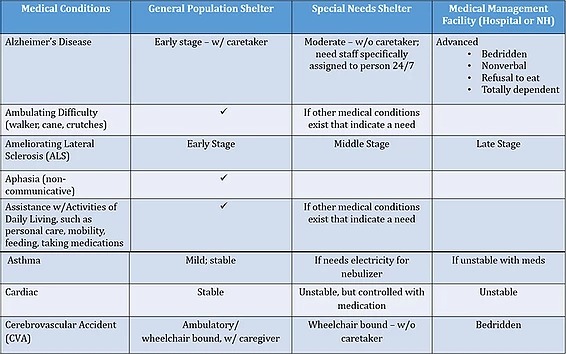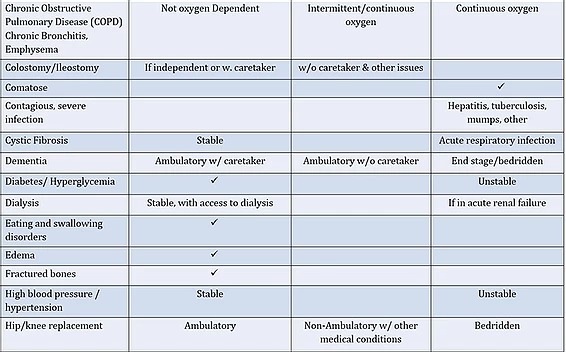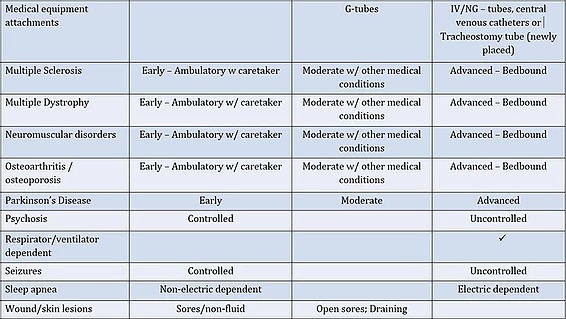In the wake of the recent 2017 hurricane season, those with special needs rose to the front of the news almost as rapidly as those that neglected their responsibilities to take care of them. Special needs Shelters are becoming more and more important as demographics change in new areas and disasters become larger and more severe.
A Special Needs Shelter is a shelter of last resort for people who need more medical supervision than a general population shelter can provide due to special medical needs, but they do not require hospitalization.
A person with Special Needs is someone who during an evacuation, either mandatory or voluntary, will require assistance that exceeds the basic level of care provided at the general population shelter, but they do not require the level of skilled medical care provided at institutional facilities such as hospitals and nursing homes.
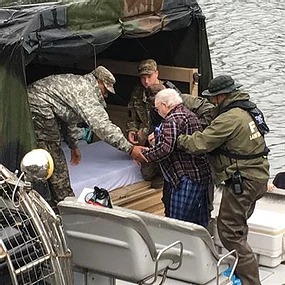
After Hurricane Katrina, haunting images of the sick and elderly blistering in the New Orleans sun were shared globally. The recent focus on the elderly trapped in flooded rest homes in Texas will not be soon forgotten either. Let’s face it, not only is a focus on Special Needs ethical, it is fiscally responsible.
Of the 1051 people who died as a direct result of Hurricane Katrina in Mississippi and Louisiana, 675 were elderly. The numbers are not even in from the 2017 season and unfortunately, the numbers may never be in from Puerto Rico.
The bottom line is that you need to be prepared to deal with the medically vulnerable population despite their age and that is no easy task. This preparation will take effort and will include thinking beyond your present ideas about sheltering. Not only can you not just “stockpile” cots and “hope for the best”, you cannot ignore the medical needs, the need for protected dignity and the responsibilities on you to preserve an infection-free environment.
IMS can assist you from start to finish. In early 2018, IMS contracted a firm of consultants that are committed to working with our clientele to help you navigate this tricky and often confusing world of Special needs Sheltering.
It is our goal to begin to cover this process in a series of blogs right here on our new website and to provide resource links, formulas and new products so that you can be ready to take on the tasks that may be in your agency’s future.
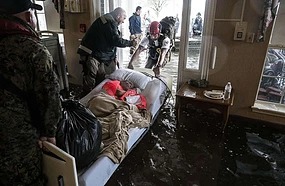 Special needs Sheltering is about having the right tools and it is IMS’ goal for 2018 to make sure we have those tools at your disposal. In this series, we will be covering not only the WHAT, but the WHY, the WHERE, the WHO and the WHEN of Special Needs sheltering.
Special needs Sheltering is about having the right tools and it is IMS’ goal for 2018 to make sure we have those tools at your disposal. In this series, we will be covering not only the WHAT, but the WHY, the WHERE, the WHO and the WHEN of Special Needs sheltering.
To begin, we must determine just what your special needs may be. States have begun (since Katrina) to compile registries of those that may need assistance during evacuations and may require special sheltering because of physical or mental handicaps. This compilation may not yet be available in your state which will require you to perform some leg work. Polling local treatment centers, physical therapy clinics, assisted living facilities and rest homes would be a good place to start.
Here at IMS, we have begun to put together formulas based on national statistics from hospitals to assist you in figuring out just what percentage of your evacuees and survivors may be classified as “Special Needs”. As we determine those in your community that fit into a “vulnerable population classification”, we can begin to look at what IMS products are right for your community and just how many units you will need along with what peripherals may be necessary to support each of those units.
When determining eligibility as a special needs patient, the guidelines are sometimes vague, but FEMA defines “Special Needs” as the following:
Visually impaired
People without vehicles
Hearing Impaired
People with special dietary needs
Mobility impaired
People with medical conditions
Non-English speaking persons
People with dementia
Single working parent
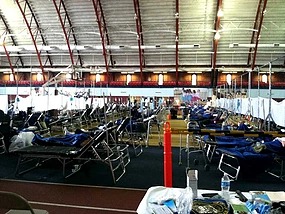 As you can see, this list is quite comprehensive and yet vague enough to leave one thinking that 70% of their population now needs to be in a special needs shelter! Not necessarily. For our purposes here at IMS, this series will be focusing on those that will require special SHELTERING and how IMS can help.
As you can see, this list is quite comprehensive and yet vague enough to leave one thinking that 70% of their population now needs to be in a special needs shelter! Not necessarily. For our purposes here at IMS, this series will be focusing on those that will require special SHELTERING and how IMS can help.
For our purposes, this series will be focusing on what is called the RENCI (Renaissance Computing Institute) Priority Criteria which looks like the following:
Level 1 (High Priority): Patients requiring uninterrupted healthcare
Level 2 Moderate Priority): Patients requiring medical services within 48 hours
Level 3 (Lower Priority): Patients requiring medical services within 7 days
And we will be adding the needs of the following:
Bariatric patients
Limited mobility patients
Installments Coming Next:
“Staffing your shelter” and “Making a list of concerns… the predictable risk is a manageable risk”.
While you wait for our next installment of this series, here is great chart showing the WHO and the WHY:
